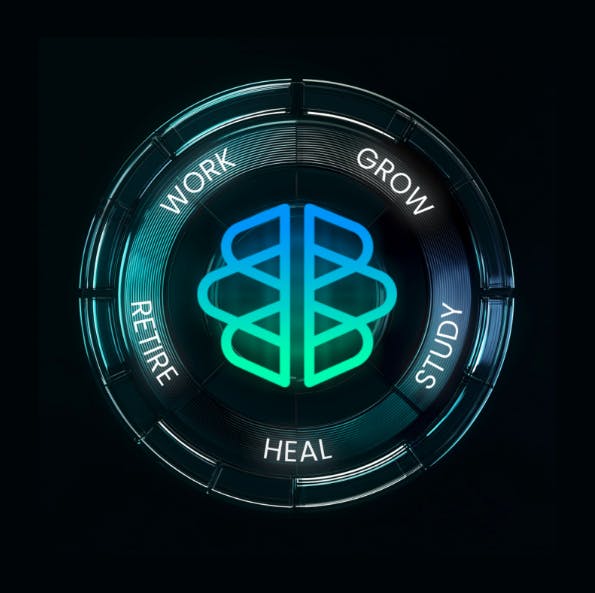Photo Courtesy of: CereBree
There was a time when education, work, and wellbeing flowed together almost naturally. A craft learned became a career; a career supported a family; a balanced life fostered learning again. Today, that harmony is broken. Our personal and professional identities are divided across logins and platforms, and the process of self-development often feels like navigating a maze without a map.
CereBree believes that fragmentation can be reversed. Its forthcoming Grow pillar, part of a larger ecosystem that includes Study, Grow, Work, and Retire, with Heal functioning as an augmented layer across all stages, seeks to rebuild the connection between how people learn, work, and care for themselves. When the company’s minimum viable product launches, users will be able to upload their CVs, analyze their skills, complete an EQ assessment, receive tailored career guidance, connect to certification platforms, and match with jobs suited to their expertise.
Rather than a single-use tool, CereBree is designing what it calls a lifelong growth companion. The platform’s premise is both practical and moral: people deserve a unified path to development, not scattered tools that compete for their attention.
A Different Kind of Ambition
CereBree’s founder, Sunil Raina, does not shy away from the scale of that goal. “We built technology that measures everything but understands almost nothing,” he says. “Our work is about helping people grow with clarity, not overwhelm.”
The need for such clarity is well documented. The World Economic Forum reports that nearly 44 percent of workers’ skills will change by 2025, while global investment in upskilling and EdTech has exceeded $100 billion. Yet, fewer than one in three adult learners can directly connect their training to new career opportunities. Somewhere between ambition and application, progress has stalled.
CereBree’s Grow pillar hopes to close that gap by creating a continuous record of growth. Skills are not just assessed once, they evolve. The platform guides users to relevant certifications, tracks their development, and aligns that progress with market demand. It is, at its core, an argument for coherence: that growth makes more sense when the pieces are connected.
“We are building something that learns with you,” Raina explains. “AI should be a mentor that helps you recognize what’s next, not a machine that dictates what you must become.”
Human Guidance in a Data-Driven Age
The promise of AI in education and career development is often misunderstood as automation, but CereBree’s approach suggests something more nuanced. By using agentic AI, systems that act with purpose rather than pure prediction, the company is trying to humanize technology’s role. The Grow pillar, for instance, interprets a CV not just as a document but as a living narrative of potential.
That distinction matters. In a marketplace where workers are constantly told to “reskill,” burnout and uncertainty are growing. CereBree’s design attempts to replace anxiety with agency. Users decide which recommendations to follow, which certifications to pursue, and how to define success. The AI becomes a collaborator in self-improvement rather than an evaluator of worth.
For many, this could mean turning digital data into something closer to wisdom - personalized, reflective, and practical. By connecting educational credentials, employment history, and wellness indicators under one secure framework, CereBree is asking whether the future of growth can finally be both intelligent and humane.
Balancing Vision with Responsibility
Integrating personal data across so many domains inevitably raises ethical concerns. CereBree’s model relies on blockchain verification to safeguard privacy and give users control over how their information is shared. The company has stated that users will own their records, choosing when and how they are used - a crucial stance in an age when digital autonomy often feels out of reach.
Still, Raina acknowledges that responsibility is as important as innovation. The company’s phased rollout, beginning with its Pioneer Program, is designed to test the Grow pillar’s recommendations, certification linkages, and job-matching algorithms in small, controlled environments. If successful, it will offer proof that large-scale integration can coexist with transparency and accountability.
The moral test for CereBree will not be whether it scales quickly, but whether it helps people make sense of their growth with honesty and respect.
A Vision Rooted in Care
CereBree’s idea may sound ambitious, but ambition alone is not its engine - conviction is. It reflects a belief that technology should reconnect what modern life has separated. By building a system that tracks, guides, and celebrates lifelong growth, CereBree is making a case for optimism in an AI industry often dominated by fear.
Raina puts it simply: “Technology should serve the growth of people, not just the growth of markets.”
That statement may define why CereBree’s vision matters. It asks not whether AI can replace human judgment, but whether it can finally respect it. And in doing so, it reframes ambition not as arrogance, but as responsibility; the responsibility to help people become whole again in a digital age that has long divided them.
Perhaps that is what AI has needed all along: not more intelligence, but more intention.


